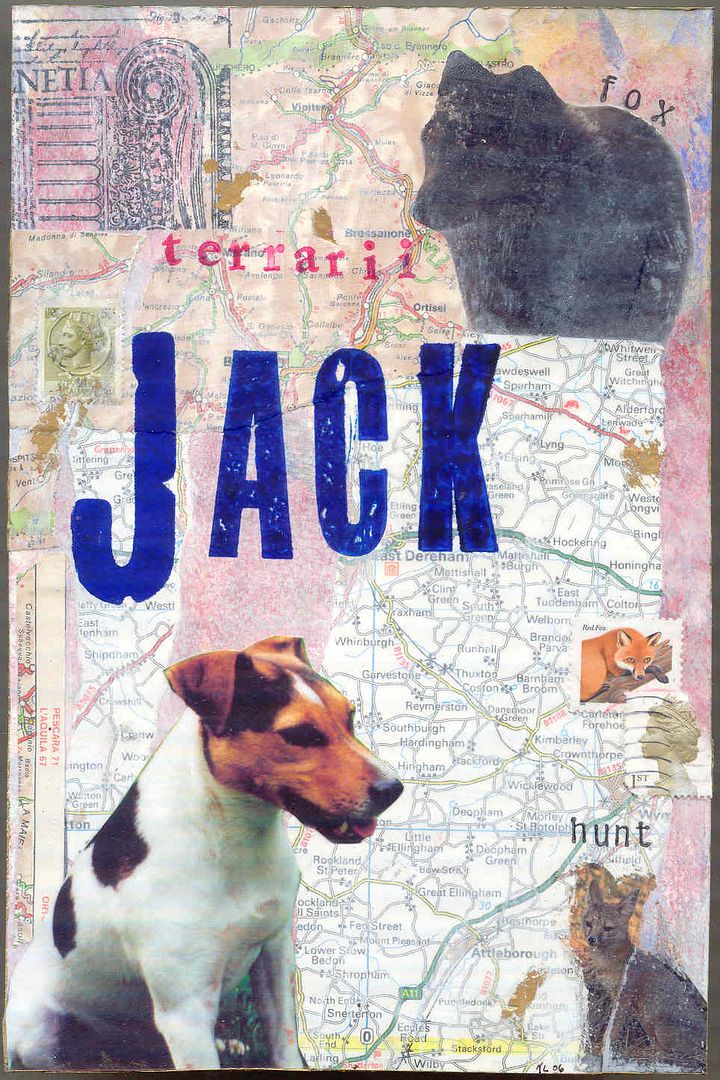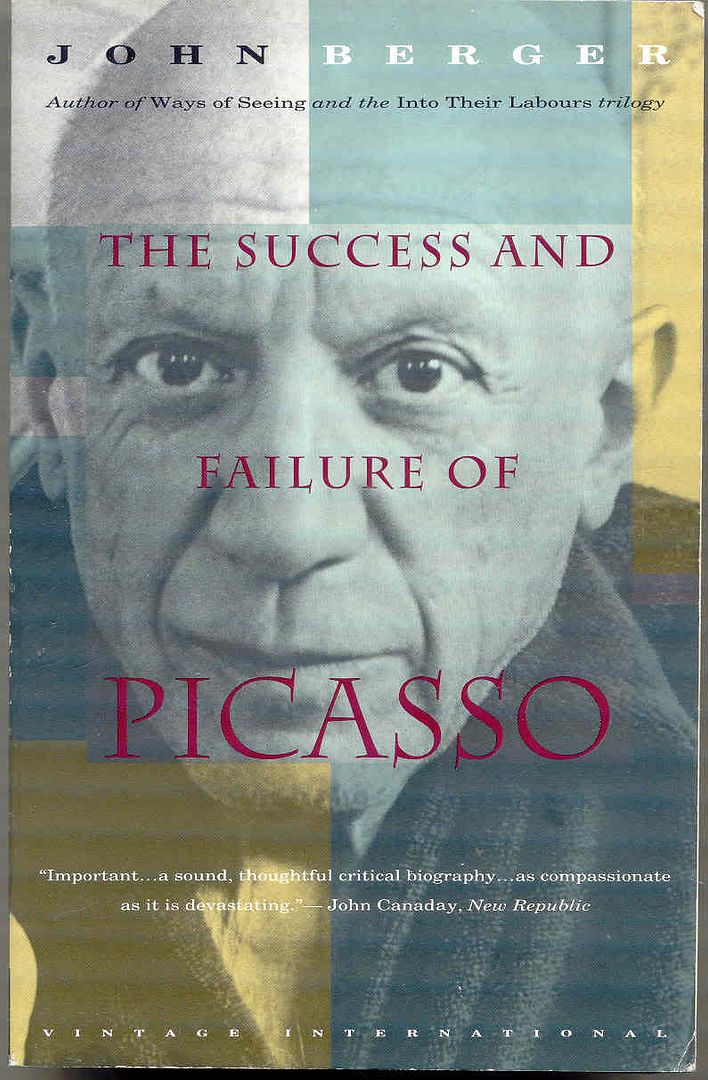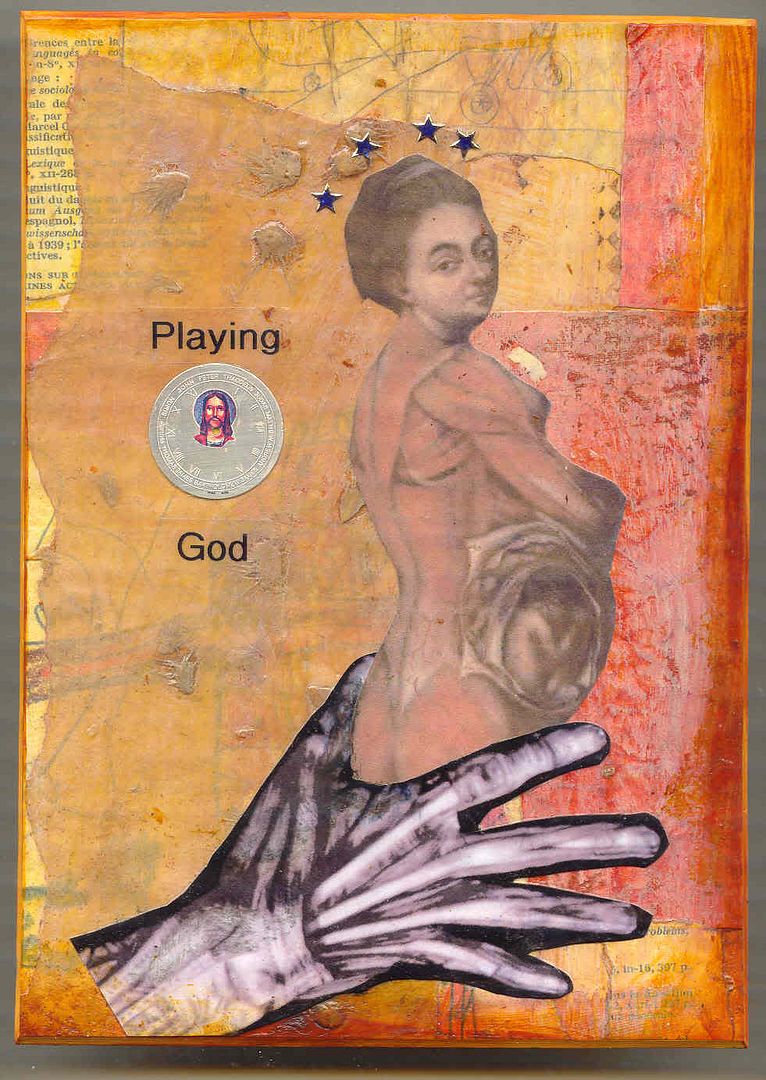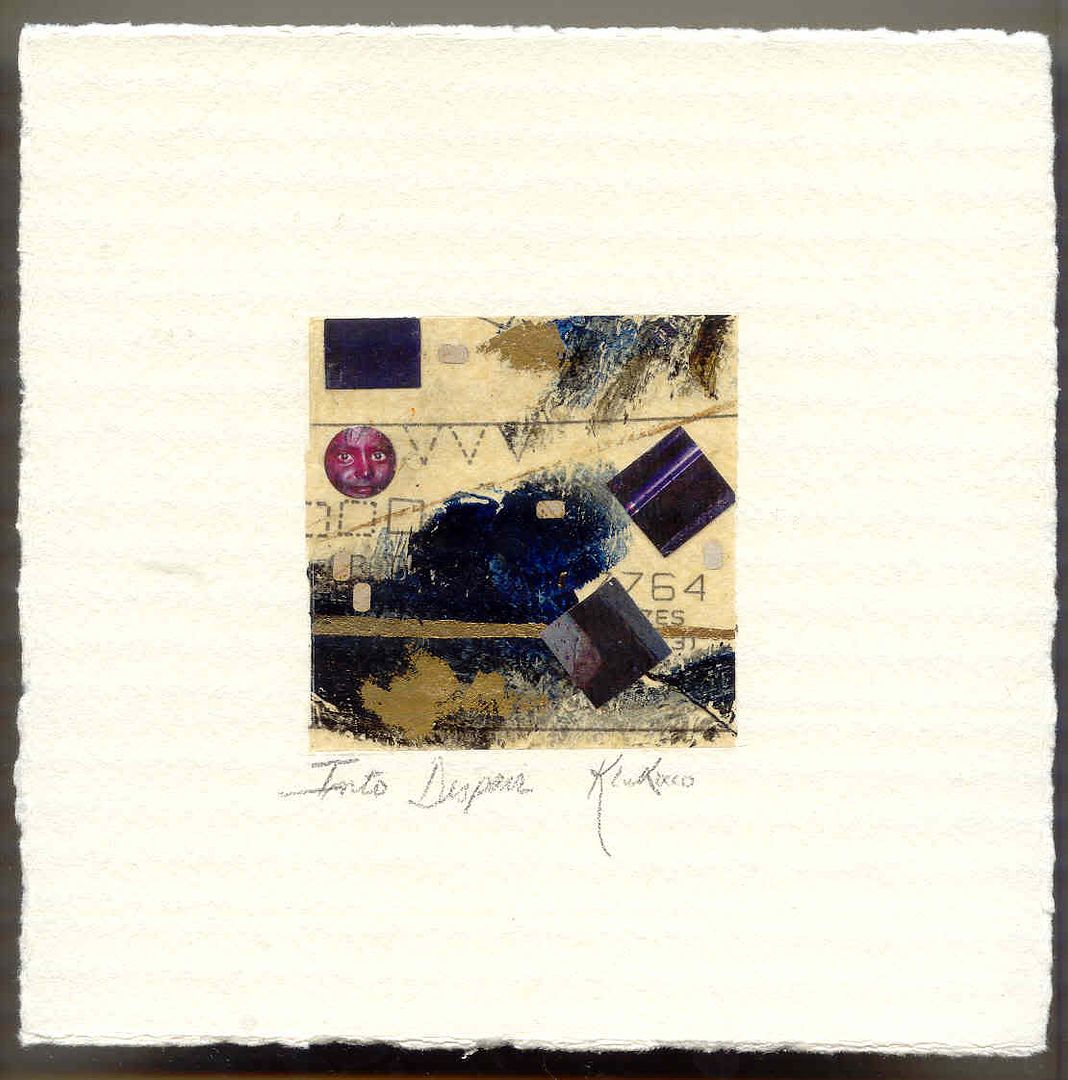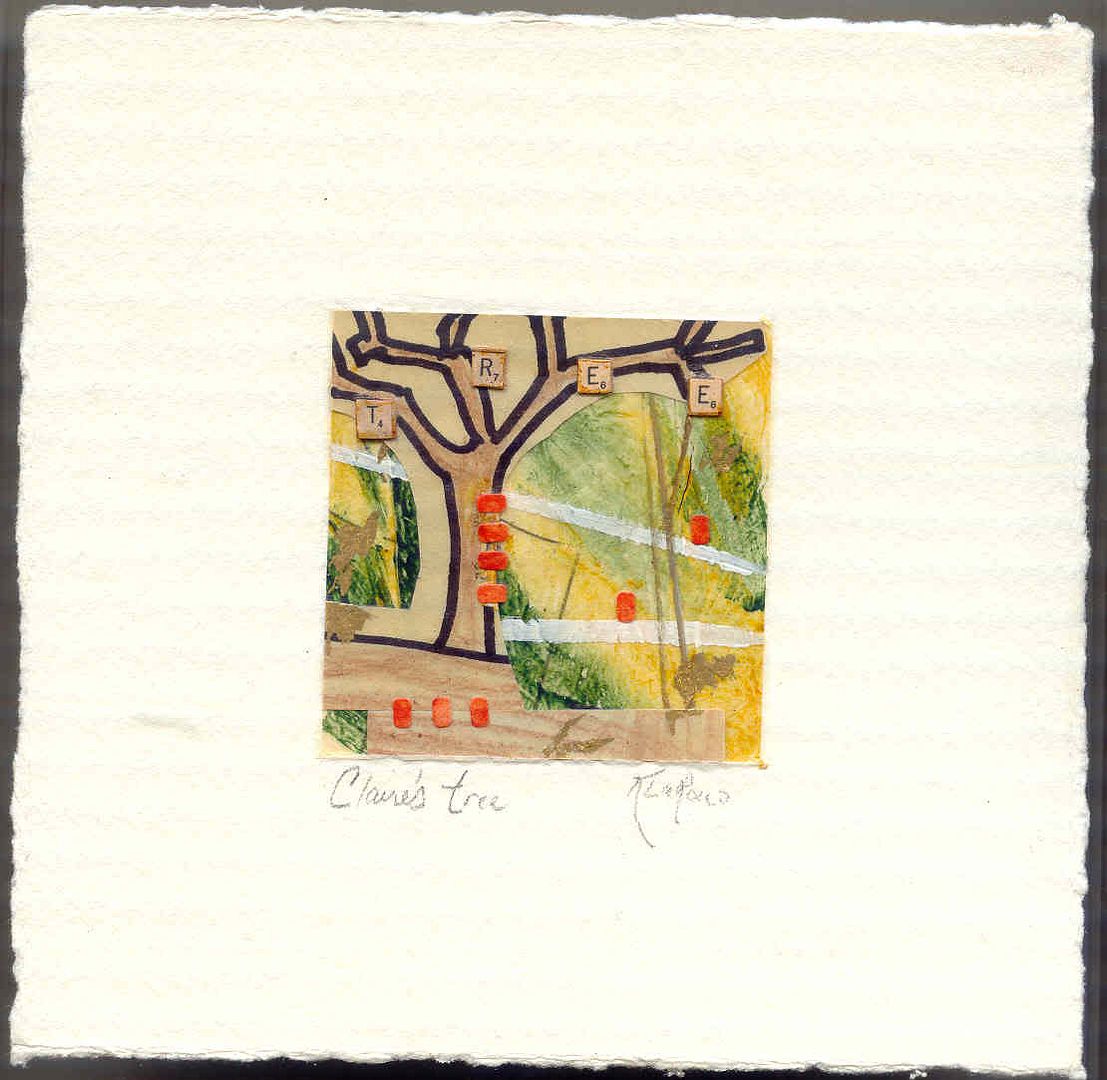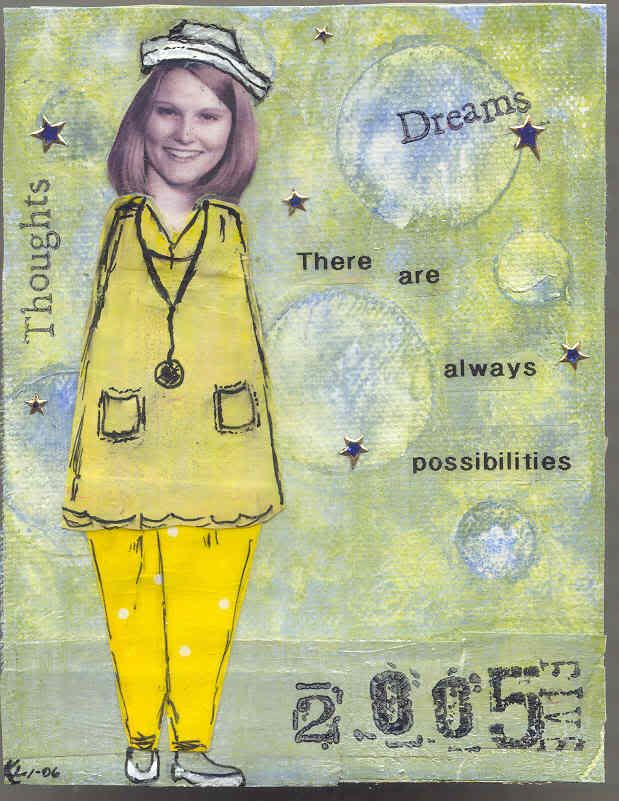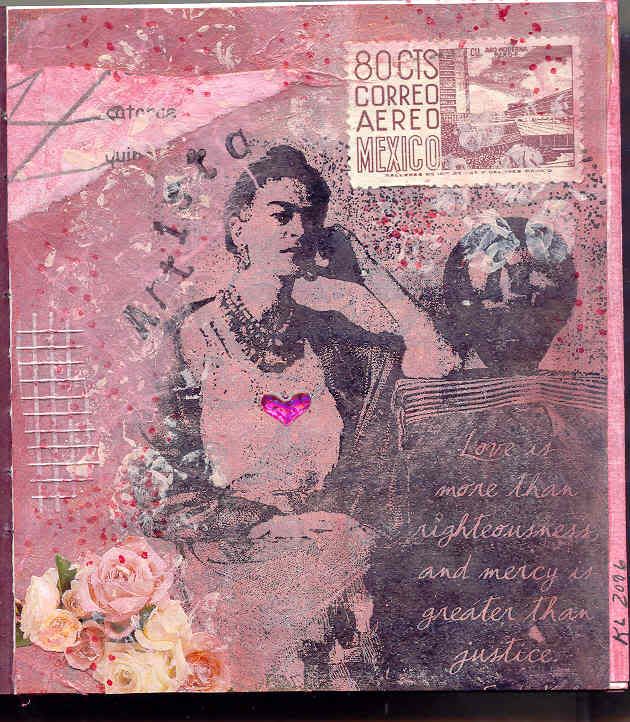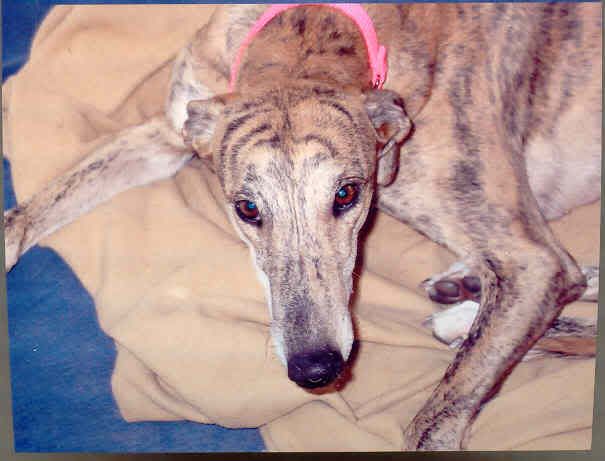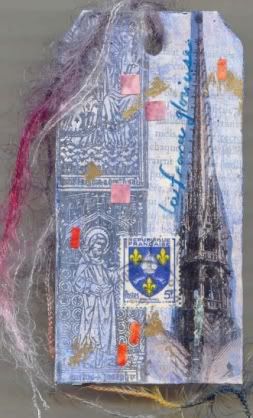So here is the tag I finished yesterday for a swap in ArtDecos. It is a mixed media piece using Jonathan Talbot's transfer and collage methods. This is a Yahoo group that I belong too. The art rivals many and I am Proud to be a member of this group. Lisa Vollrath moderates it and she does a great job.
So I promised to post more about me. About two years ago I began a correspondence with Jonathan Talbot. I was exploring his alternative method in collage and wanted a tacking iron. Needing more information I called his home thinking it was a gallery or something and expecting to talk with a sales person. Boy was I naive! I was fortunate enough to talk to the artist himself! Our conversation turned quite long and he gave me a challenge. Below is my rsponse to his challenge and that should be enough to document my beginnings.
"As for your homework assignment, I believe it went something like this: "Write me an email describing the relationship between microbiology and visual arts. OK so as I gave this some thought, I realized this would reveal some basic truths about the science that was so much a part of my life (20 plus years) and the artist within. As I write this, I feel a sense of wonder. By this I mean that sensation which occurs when a child realizes that a firefly light isn't hot but rather cool to the touch. I begin to understand why creating has always been a part of me, has always been lying just underneath the surface waiting to be recognized by my conscious self. Even during my rigorous studies, followed by my scientific career, the process of creative expression was being developed. With this said let us begin this dissertation (I don't mean to scare you here), with some rather boring background information. It is written so that you might understand where I came from as a scientist.
As there are numerous types of doctors such as surgeons, internists, pediatricians, general practitioners to name a few, there are numerous types of microbiologists. Mycologists, taxonomists, clinical, industrial, food, epidemiologists, are just a few. As doctors specialize, so do microbiologists. These scientists have come through the system in a couple of ways; either being educated in a classical approach or in a molecular genetic program. The training I had in college and graduate school was considered classical training. That means we memorized like hell for 4-6 years, every fact about the existence of every known group, genus, and species of organism. Bacteria, mold, viruses were all included. Of course there was more to it than memorization...there were all those laboratory techniques to memorize (ha). We learned how to actually manipulate basic functions of the cell through classical mutagenesis procedures. That was the fun part! We had to understand biochemical pathways for a given type of organism so that we could mess it up and hopefully create a "super bug," so to speak. Depending upon the discipline, the microbiologist could create a new organism that was say less pathogenic than its parent, or that produces a new substance, or more of an antibiotic, etc. Our educational backgrounds were often through the biological sciences with chemistry thrown in for good measure. In advanced work we took more complex science and engineering topics as well as the microbiology specialty.
As a classically trained microbiologist we were taught to rely on our senses including sight, smell and sometimes even touch when it came to an organism's isolation, cultivation, and identification. While book knowledge was certainly a good thing, our intuition was almost revered and this is one reason why microbial isolation and identification is often called an art form. Don't be fooled...this work is by no means glamorous and is often done behind the scenes. It can be considered repetitive and downright "dowdy." Methods used in altering cellular function is often random and can take many months and years to find that needle in the hay stack. These methods are based upon screening thousands and thousands of individual colonies in order to find the culture that exhibits the properties one is hoping for. Alas there seems to be less of us trained in a classical environment these days....The sexy side of this science, if you will, is the molecular genetic or molecular biological approach. These scientists are highly skilled and usually have advanced degrees in biochemistry or biochemical engineering before they enter this type of program. They usually attain a Ph.D. in this area. This is where it is at today! Tinkering with the basic building blocks of life, DNA, offers tremendous possibilities in all areas of microbiology. By sequencing the genome of a human pathogen such as the Aids virus, or the genome of an organism that produces a life saving drug affords major break throughs in therapy and disease prevention or in the manufacture of improved compounds or even new ones. The possibilities seem endless and very promising.
What I have described thus far are two general pathways to a microbiology career. It is not meant to be inclusive or even authoritative. Just know this has been a part of my experience. Molecular genetic techniques were just being developed when I went through grad school in the late 70's and so as I mentioned above, I came through a classical approach in the area of food microbiology. I retired after 20 years in my field to stay at home with my young children. They are now 11 and 9 (the twins). During my time in the field I developed a keen sense of observation (almost legendary at Abbott Labs), became a sought after trainer because of those skills, published numerous research articles including a chapter for a book, received prestigious awards for my work, and learned to say "WHY NOT?" or "WHAT IF" when others said "NO WAY." Intuition was as important as my book knowledge and so I would often find those "problematic" organisms sitting in my lab courtesy of my molecular geneticist colleagues.
Some of those qualities mentioned above surely must be shared by those in the arts. Good observation skills, a rebellious nature, sense of adventure, childlike wonder, experimentation skills, and tenacity may be seen and felt by the observer. Your paintings and your body of work makes your statement, be it personal, social, political, or philosophical as my research and publications make mine. Am I onto something here? No wonder I am in the process of exploring my own creative expression.
As for more concrete relations between the visual arts and microbiology...here is one microbiologists perspective.....Classically trained microbiologists spend an inordinate amount of time looking under the microscope. Our sense of sight becomes honed here if you will. In addition we rely on some other basic tools...the test tube and the petri dish (both vessels used in culturing microorganisms). To a lay person or new scientist, the world beneath the scope is strange and confusing. Organisms associate in such amazing ways but if one looks long enough, patterns and shapes emerge. Using staining materials such as Eosin, malachite green, carmine, gentian violet, fuschin, and methylene blue, the specimen now readied for examination, reveals an explosion of colors that gives way to distinctive shapes, and patterns. Clusters of grapes, spiderous shapes, four leaf clovers, worms, chains, corkscrews, and threads are but a few descriptions that I have either used or heard over the years. Those descriptions help to associate a given group of organisms with what is seen under the scope. These tiny organisms are not so foreign when you describe them in terms of your environment. As an organism grows on a given solid medium (source of food often in a petri dish), a variety of colonial morphologies can be described as cavernous, volcano like, mesas and mountain ridges, milky ponds, slick ice patches, snowflakes, and wispy cotton candy. I once remember thinking that I was looking at a southwest landscape. The petri dish contained rich hues of sepia, burnt sienna, raw umber and colonies took on the shape of giant mesas. Cool huh? Growth in a liquid substrate reveals slimy stringy suspensions (like clear gel tar), or pellicle suspension (like shavings of white crayon) to describe just a few. Mold and filamentous type organisms offer perhaps the greatest arrays of color and shapes that I have ever seen. These organisms are often highly pigmented and beautiful shades of greens, blues, yellow, reds, and browns can be observed. The pigments are rich and often are secreted into the growth medium making for an even more spectacular show. The color are sometimes surreal, fluorescent, iridescent... and always spectacular. Colony morphology is as varied as the color and can be described as great craters (like the moon craters), cauliflower heads, fluffy cotton balls, and waves (like the ocean). Finally, the way I approached my research should serve me well as I explore the visual arts. Experiments were planned based upon current theories, very carefully, and methodically. It was however, with a bit of serendipity and a I don't give a damn what others think attitude (of course when things weren't going well), that the most satisfactory results were obtained. I have always enjoyed the experimental design aspect of my work and this explains why I took those first baby steps into the art realm. My inquisitive nature (crucial for good science), a thirst for knowledge (again right up there on the list), and being aware that failure can be a good thing, a learning experience for sure, are now being used in creating something as small a little card.
So this is the revelation...that microbiologists by their nature and training, posses the tools to enjoy the creative process. Although I have no formal training in the arts (I don't count the workshops I have taken or the few college courses in watercolour), that will not hinder my process but rather challenge me to go forward. In closing, I don't know if this piece is what you were looking for but it is what I was looking for. For me this has indeed been a revelation, a closure and a new beginning all in one! My work is for me now and may always be so...however it is the creative process that is being fed and the joy of discovering something new with each step that I take.
PS: I love a good challenge and thank you for indulging me!".
And there you have it. Jonathan has been an inspiration to me for some time. Thanks to his poking and prodding, I have discovered more about myself and capabilities than I would have on my own. I was lucky enough to take one of his workshops and will write more about that later!
